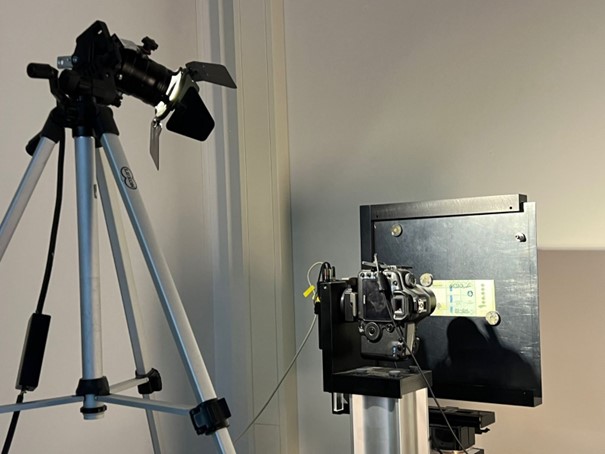Behind the Scenes: Holograms & How Keesing Captures Them
Holograms play an important role in modern security measures, acting as strong barriers against counterfeiters attempting to illegally copy documents and products. This blog aims to explain holograms by addressing why they are essential, how they work, and how companies like Keesing capture holographic security features from document to database for reliable authentication & identity verification.
What is a hologram?
A hologram is an OVD (Optical Variable Device) which contains images that change depending on the angle of view. It is composed of grids that diffract light. This allows various images and effects to be generated, including color changes (shifts) as well as 2D and 3D images.
Holograms are not only featured in banknotes, passports, or identity cards, but also on bank cards or as labels on some consumer goods such as beverages, electronic devices, and more. On a document, a hologram can be included as a patch or a laminate, while on a banknote, holograms can take the form of a patch, foil, or thread.
How do holograms prevent counterfeiting?
Holograms prevent counterfeiting because of their complexity, making them difficult to replicate using traditional methods. While counterfeiters are becoming more sophisticated, replicating holograms with 100% accuracy is still unlikely. Holograms’ intricate patterns and properties make them difficult to duplicate completely, which deters counterfeiters.
Additionally, holograms are designed to be easily recognizable by trained individuals, facilitating quick identification of genuine products versus fake ones. This aids in a more efficient authentication process.
Furthermore, holograms possess tamper-evident attributes that serve as an additional layer of security. Any attempt to interfere with or peel off a hologram causes visible changes or damage, such as patterns or messages.
How does Keesing process holographic security features?
Keesing’s method for handling holographic security features is a thorough series of processes that ensure accuracy and reliability. Initially, document experts carefully scrutinize, locate, and describe the hologram in the document. This stage is vital for understanding the holographic element and its placement in the document. The notes written by the experts will be then forwarded to Studio.
In the studio, advanced photographic equipment is used to capture the hologram from various angles. The angles used are determined by how the hologram reacts to light and movement. Typically, they take 90 to 120 photos of the holographic device. This rigorous technique ensures that every feature of the hologram is meticulously documented.
Following the photography process, special software is used to dynamically present the hologram into Keesing’s solutions, allowing users to view it from various angles and perspectives. This interactive feature mimics the real-life experience of tilting a document, giving users an in-depth understanding of how the holographic security feature appears under different settings.
Check holographic security features reliably
It is quite impossible to remember all the details of security features in thousands of documents from hundreds of issuing authorities. Therefore, it is helpful to use reference databases to confirm the legitimacy of holograms on identity documents or banknotes. These resources provide detailed information about the holographic features and security elements used by various issuers.
Cross-referencing allows you to identify key indicators of authenticity, such as unique patterns, animations, micro-texts, or other hidden features. Furthermore, reference guides such as the DocumentChecker contain high-resolution images as well as interactive animation, so users know how holograms would react when a document is tilted around in real life.
Keesing DocumentChecker is the world’s most comprehensive and up-to-date database for ID documents and banknotes; containing over 7,000 documents from 200+ issuing authorities. Whenever a new document is uploaded, or when a counterfeit is in circulation, DocumentChecker alerts users with notifications. When you doubt that a document is genuine, Keesing Helpdesk, staffed by certified experts is here to assist you. They answer document-specific questions, inspect questionable IDs, and help companies decide whether to accept or decline presented documents.
Using a reference database makes the identity verification or document authentication process more accurate, providing confidence to individuals and organizations in charge. Try DocumentChecker for free by clicking on the button below, call at +31 (0)20 7157 825 or email us for any other enquiries and we would be happy to assist you.
Sources:
Study of Forgeries – OVD (Optical Variable Devices). (2018). Keesing ID Academy.
Advanced hologram technology – Keesing Platform (keesingtechnologies.com)




